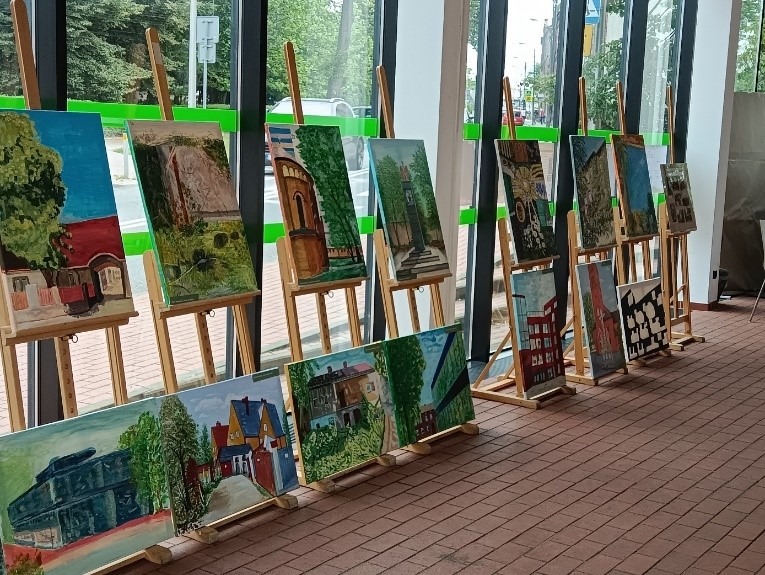Artistic projects can educate the public about ecological issues by presenting complex information in an accessible and engaging manner. Exhibitions, installations, and performances can highlight environmental problems, such as climate change, pollution, and habitat destruction, bringing them to the forefront of public consciousness. Therefore, Katowice Place Lab uses art as one of the activities for raising awareness and sensitivity to ecological and environmental issues among Katowice residents.
In collaboration with the amateur art group “Light,” active at the Dąb District Culture Center, we organized a plein-air workshop dedicated to showcasing the importance of nature in cities. The workshop began in April with a meeting and two inspiring lectures delivered by members of Katowice Place Lab’s Competency Group: Professor Edyta Sierka and Professor Krzysztof Rostański, who is also an amateur painter.
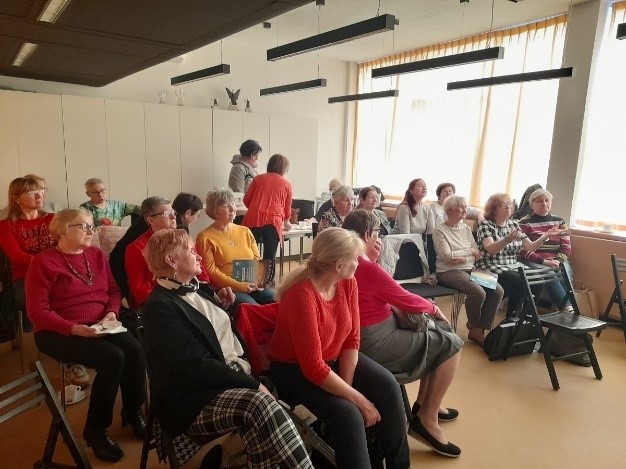
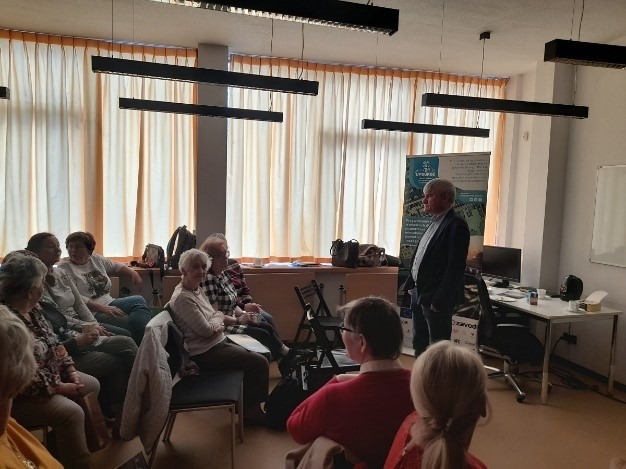
Inspired by these talks, twenty ladies from the “Light” art group started painting Katowice Dąb landscapes under the guidance of group animator Ms. Agnieszka Jasińska. In May, the group participated in a guided walk to explore the local nature in depth. We jointly rediscovered and experienced the green spaces of local yards and landmarks, culminating at the Dąb Parish Church. Here, in addition to learning about the church and its history, the artists admired the architecture surrounded by old trees. This location, a green refuge amid modern buildings, left a lasting impression on the participants.
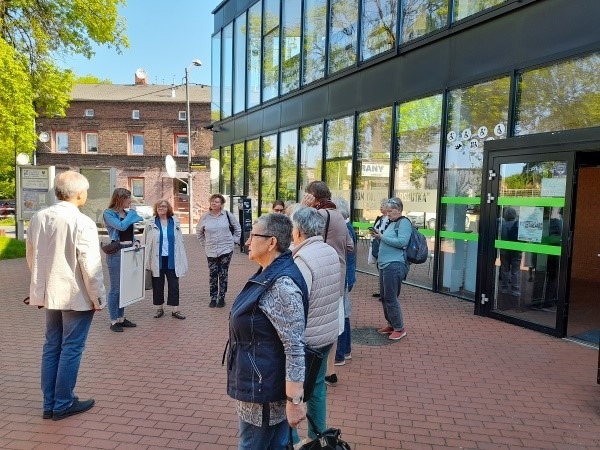
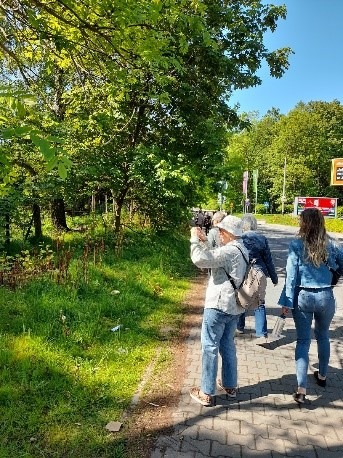
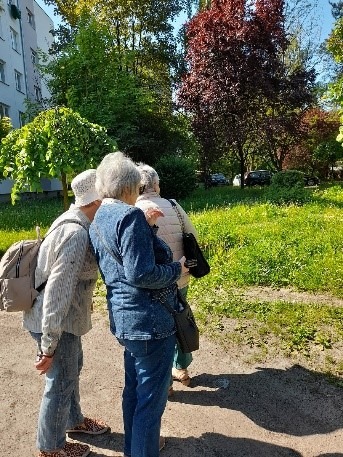
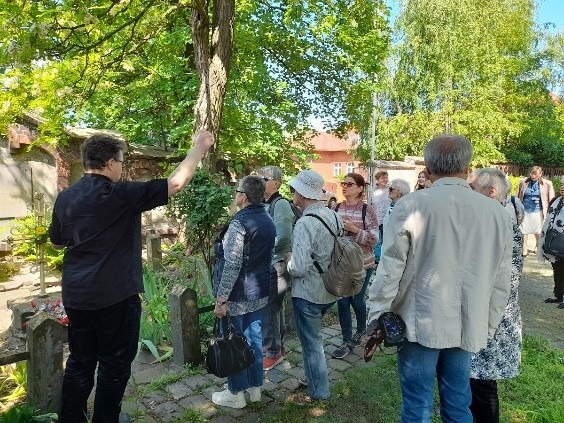
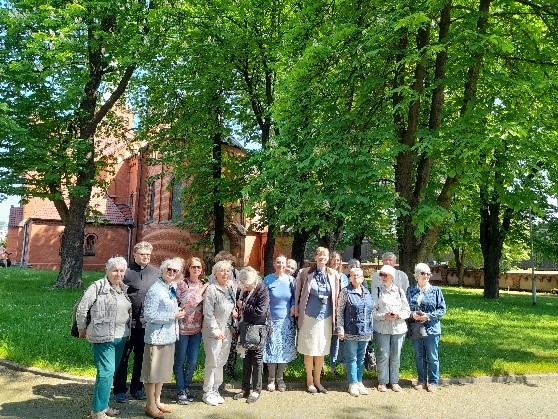
Loaded with inspiration and motivation, the art group continued with their paintings, to make them ready for an exhibition which took place on June 22 during the Dąb District Festival organized by the Dąb District Culture Center. These pieces of art created experiences that resonated deeply with the painters and visitors of the festival, fostering empathy and a personal connection to environmental concerns.
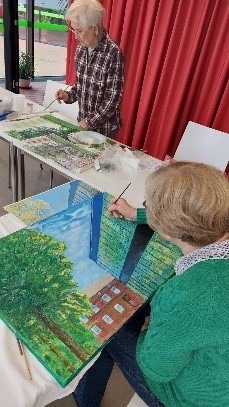
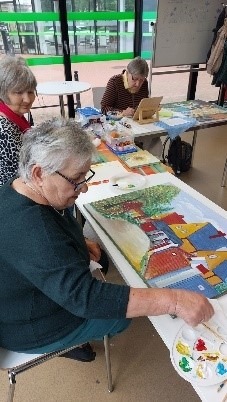
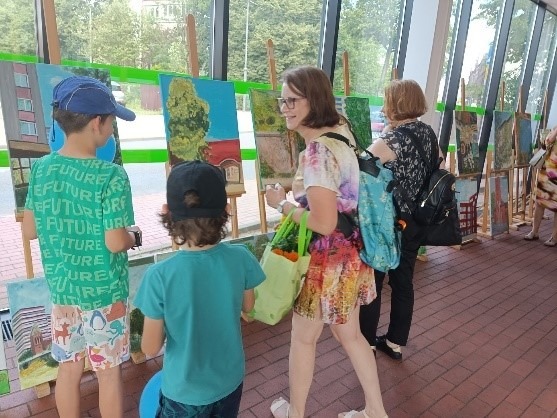
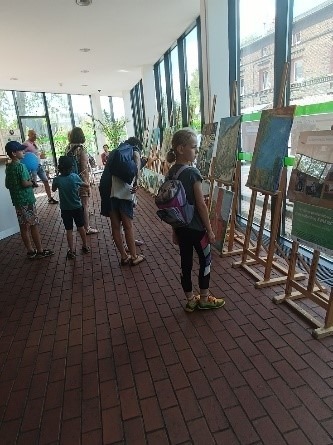
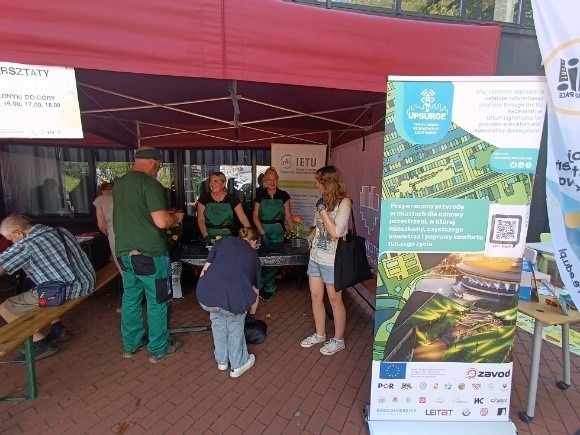
The workshop also provided an opportunity for a focused study to gather insights on ecosensitisation. Professor Aleksander Wolski collected intriguing findings regarding seniors and their relationship with nature. The focus group comprised 15 members of an amateur art group, all women aged 60-80, residing in Katowice. Participants were asked 7 simple questions:
- Are you familiar with the term “nature-based solution”?
- What do you associate with nature-based solutions and strengthening them in cities?
- What is your understanding of eco-sensitivity?
- What is the influence of the natural environment on your artistic work?
- Do you expand your knowledge of the surrounding nature when inspired to paint?
- Do you prefer native plants for inspiration in your paintings, or does this not matter?
- What do you miss about the environment (cultural landscape) of the Dąb district?
The responses revealed that the participants had never heard the term “nature-based solution.” However, in response to question two, they indicated familiarity with the concept, associating nature-based solutions in an urban context with elements such as forest parks, reduction of concrete, permeable surfaces, flower meadows, flowerbeds, and preserving existing tree stands.
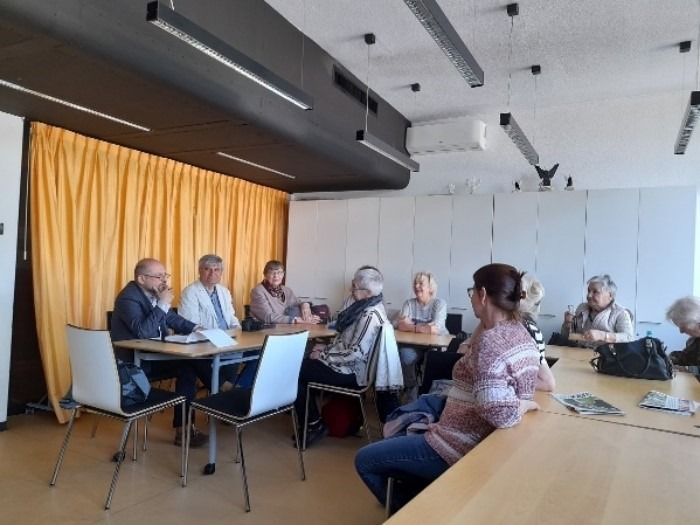
The respondents mostly understood eco-sensitivity as developing habits to protect nature, maintaining cleanliness, participating in social campaigns about respecting and protecting nature, and revitalising natural areas.
Ten out of 15 respondents declared that nature inspired their paintings. Consequently, they often turned to professional literature or the internet to deepen their knowledge of local flora, learning about plant names and characteristics. In nature motifs, they were most inspired by shape, colour, light (including colour shades), and natural compositions.
In response to question six, most respondents stated that the origin of plants was not particularly important. They emphasized aesthetics and composition. However, one respondent found old, native tree stands to be the strongest inspiration.
The respondents did not consider the lack of greenery to be the most critical issue in the cultural landscape of the Dąb district. Instead, they identified a lack of available knowledge about the district’s resources (e.g., information boards, educational paths, accurate and accessible descriptions), a lack of architectural order and harmonious composition respecting the district’s historical character, and a lack of safe bicycle paths as the most pressing concerns.
But this is not all. The green bus stops in Katowice will also have an artistic touch. We plan to decorate them with posters presenting nature based solutions and their beneficial role in cities developed thanks to collaboration between the Katowice Greenery Enterprise with the Academy of Art. First proposals of these posters have been developed by the students and definitely will be ready for display when the green stops are ready in September this year. This can stimulate cross-disciplinary collaborations and the development of novel approaches to sustainability. This can help people grasp the interconnectedness of natural systems and the impact of human activities on the environment. art can motivate people to engage in sustainable practices, support environmental policies, and participate in conservation efforts.
We believe that art influences ecosensitisation by engaging emotions, raising awareness, inspiring action, shifting cultural values, fostering creativity, encouraging public participation, and simplifying complex ecological concepts like NBS. Through these mechanisms, art plays a crucial role in promoting environmental consciousness and sustainability. Therefore, we will continue with our art and nature experience in the Katowice Place Lab activities.

